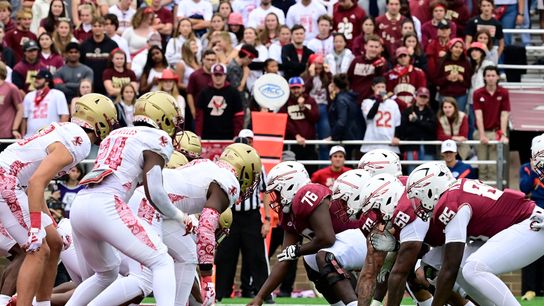In baseball they say the last out is the hardest to get, and so it is in football. Of the 100 yards on the field, none are more fiercely defended that the one immediately in front of the goal line.
And yet, according to a multi-year study across multiple seasons by USA Today, college football teams line up in the shotgun from the 1-yard line on more than 55 percent of the studied snaps.
The 90 shotgun snaps from the 1-yard line resulted in touchdowns just 56 percent of the time, a sharp decline from the 72 percent touchdown rates on plays that began under center.
The reasons are obvious. A shotgun snap from the 1-yard line removes the threat of the quarterback sneak, removes the opportunity for running backs to get downhill, and makes passing more difficult by eliminating the threat of play-action.
The question then becomes why so many offensive coordinators would willingly snap the ball to the 6-yard line when the play begins at the 1. The answer is multi-faceted. The spread offense has been around so long now that not only has virtually every college quarterback taken every snap of his career from the gun, but now plenty of offensive coordinators have never truly taught a quarterback to get under center. The lack of corporate knowledge in how to take the ball directly from the center's hand, coupled with the lack of practice reps, has led coaches to stick with what they know on the most highly-leveraged piece of real estate in football, even knowing its downsides.
"It's easy to sit in the nickel seat I'm in now and sound like I'm criticizing coaches − I'm not. Because I'd tell any of them, 'Teach what you know'. If you don't know it, you can't just look at a film and say, 'Let's do this,'" former Ole Miss and Duke head coach David Cutcliffe said. "At the same time, I'm not sure that offensive coordinators as a group fully understand all the idiosyncrasies of under-center goal-line offense anymore. It's taught at some places. It's not taught everywhere."
However, the fear of an under-center snapped football getting lost in a sea of humanity is overblown, the study found. Across 72 under-center snaps studied by USA Today, not one was fumbled. (Alabama did fumble an under-center snap from the 2.)
The study found that there was something special about the 1-yard line. The shotgun resulted in more touchdowns from the 3-yard line (44 percent, versus 36 percent of under-center snaps), and both alignments resulted in touchdowns on 57 percent of plays from the 2-yard line. But the data from the 1 was clear.
